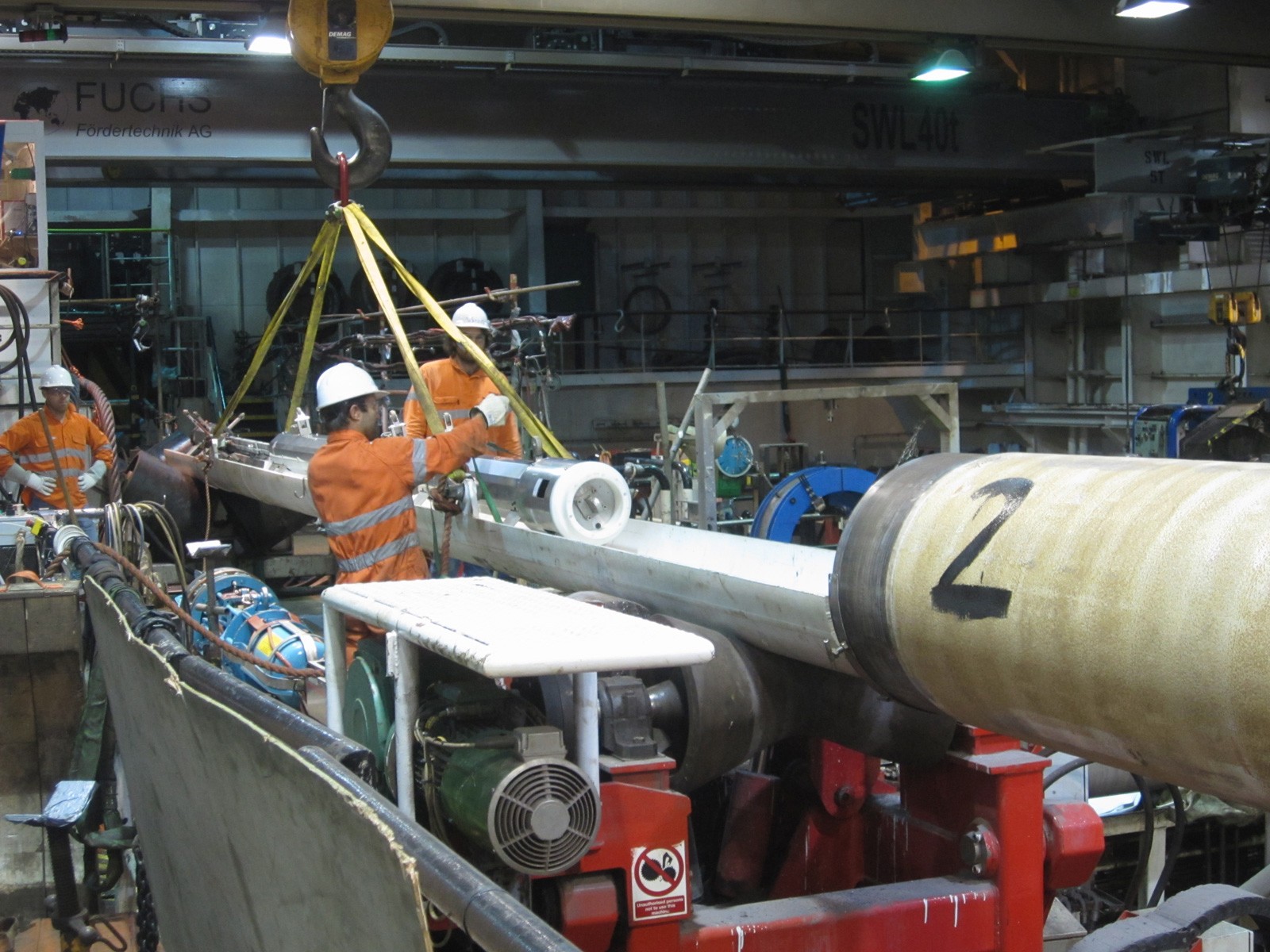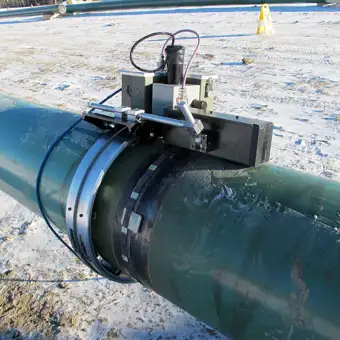Recognizing the Basics of Pipe Welding Examination: Essential Elements for Assessing Weld High Quality and Fighting Failures
In the realm of pipe welding assessment, the risks are indisputably high, demanding a thorough understanding of fundamental principles to make sure weld high quality and minimize failing dangers. Different critical elements come into play, including the choice of suitable materials, the application of innovative evaluation strategies, and the acknowledgment of common welding problems.
Relevance of Weld High Quality
The integrity of a pipe is essentially reliant on the quality of its welds, making weld quality a crucial consider ensuring risk-free and efficient operation. A pipeline weld offers as a joint factor where products are signed up with, and any deficiencies in this field can lead to significant structural weak points. Poor weld high quality can cause leakages, ruptures, and catastrophic failings, positioning significant safety risks and environmental risks.
A number of variables add to the quality of a weld, including the option of welding process, the abilities of the welder, and the problems under which the welding is performed - Pipeline Welding Inspection. Insufficient preparation, incorrect warmth input, and contamination can endanger weld stability, causing issues such as porosity, incomplete fusion, or splits. As a result, rigorous quality assurance procedures must be carried out throughout the welding process to reduce these risks
In addition, the long-lasting efficiency of a pipeline is heavily affected by the longevity of its welds. Top notch welds not just enhance the overall strength of the pipeline but additionally prolong its life span, lowering the need for costly fixings and downtime. Therefore, ensuring exceptional weld quality is vital in pipeline design and upkeep practices.
Trick Inspection Techniques
Making sure weld high quality requires the application of reliable inspection techniques to determine possible problems prior to they lead to failings. Pipeline Welding Inspection. Amongst the most extensively utilized approaches are aesthetic assessment, radiographic screening (RT), ultrasonic screening (UT), and magnetic particle testing (MT) Each method serves a distinctive function and is picked based on the specific requirements of the pipeline task
Visual assessment is the first line of protection, allowing examiners to assess surface area conditions, placement, and overall handiwork. It is a quick and cost-efficient method that can reveal obvious issues. Radiographic testing offers a comprehensive view of interior weld stability by making use of X-rays or gamma rays to identify subsurface problems. This strategy is particularly reliable for determining voids, splits, and inclusions.
Ultrasonic testing uses high-frequency acoustic waves to evaluate the density and integrity of welds, making it perfect for discovering inner interruptions. Magnetic fragment testing is a reliable technique for determining surface and near-surface defects on ferromagnetic products by using magnetic fields and great ferrous bits. By using these vital evaluation strategies, pipeline welding assessors can guarantee the best quality requirements are kept, eventually causing safer and more trustworthy pipeline systems.
Common Welding Problems
Amongst the most prevalent flaws are porosity, which occurs when gas entraps in the weld steel, developing gaps that deteriorate the joint. An additional significant issue is lack of blend, where the weld steel does not properly bond with the base product, jeopardizing the joint's stamina.

Splits are additionally an essential issue, showing up in numerous kinds such as hot fractures, cool fractures, and origin cracks. Each type postures one-of-a-kind obstacles and needs specific inspection techniques for detection. Undercut is another problem that can decrease the weld's cross-sectional location, bring about anxiety concentration factors, while slag addition takes place when non-metallic product ends up being caught in the weld swimming pool, detrimentally impacting the mechanical buildings of the weld.
Furthermore, inaccurate grain shape can cause irregular anxiety distribution. Acknowledging these typical issues is vital for assessors and welders alike, as very early discovery and modification are important to making certain the durability and reliability of pipeline systems.

Products and Their Impact
Picking the appropriate products for pipeline welding dramatically influences the general efficiency and integrity of the welded joints. The option of base metals, filler products, and layers plays an important role in determining the toughness, rust resistance, and durability of the welds. As an example, carbon steel is typically used for its balance of stamina and price, but it may be vulnerable to rust in certain environments, necessitating using protective coverings or corrosion-resistant alloys.
Moreover, dissimilar steel welding needs cautious factor to consider of thermal development residential or commercial properties and prospective galvanic rust. The compatibility of products can substantially influence the microstructure of the weld, bring about variants in mechanical homes. For instance, stainless-steel uses exceptional corrosion resistance yet Learn More Here may need particular filler products to guarantee a sound weld joint.
On top of that, the impact of temperature and environmental problems on material option can not be taken too lightly. High-strength steels may shed ductility at elevated temperatures, while low-temperature applications could need materials with enhanced durability. Inevitably, understanding the effects of material options is crucial for accomplishing optimum weld high quality and protecting against failures in pipe resource systems.

Regulatory Standards and Conformity
Regulatory criteria and conformity play an essential role in pipeline welding, establishing the structure within which secure and efficient techniques are preserved. These requirements are established by various organizations, including the American Culture of Mechanical Designers (ASME), the American Welding Culture (AWS), and the Pipe and Hazardous Products Security Administration (PHMSA) Sticking to these guidelines guarantees that welding procedures fulfill the required quality and security benchmarks.
Compliance with governing criteria is necessary not just for making certain the integrity of the welds but likewise for securing the setting and public security. Inspectors are charged with verifying that welding operations follow these requirements with extensive evaluations of both the procedures and the last welds. This entails evaluating welder qualifications, welding procedures, and the materials utilized.
Failing to abide by well-known policies can bring about considerable effects, including pricey repair services, legal obligations, and devastating failings. As a result, companies have to integrate conformity into their functional practices, promoting a society of safety and quality. Normal training and audits are crucial components in keeping adherence to these regulatory criteria, try here ensuring that all personnel are well-informed and equipped to maintain the greatest degrees of pipeline welding quality.
Verdict
In conclusion, a comprehensive understanding of pipeline welding examination is essential for ensuring weld high quality and preventing failings. By using vital assessment strategies and recognizing typical welding issues, assessors can effectively assess the integrity of welds.
In the realm of pipeline welding assessment, the risks are without a doubt high, necessitating an extensive understanding of essential principles to make certain weld high quality and alleviate failing risks (Pipeline Welding Inspection).The integrity of a pipeline is fundamentally reliant on the high quality of its welds, making weld quality an important element in making certain risk-free and efficient operation.Several elements add to the high quality of a weld, consisting of the selection of welding process, the abilities of the welder, and the problems under which the welding is done. Undercut is one more issue that can minimize the weld's cross-sectional area, leading to tension focus factors, while slag inclusion happens when non-metallic product becomes entraped in the weld pool, negatively impacting the mechanical residential properties of the weld
In final thought, a detailed understanding of pipe welding assessment is crucial for making certain weld top quality and protecting against failings.